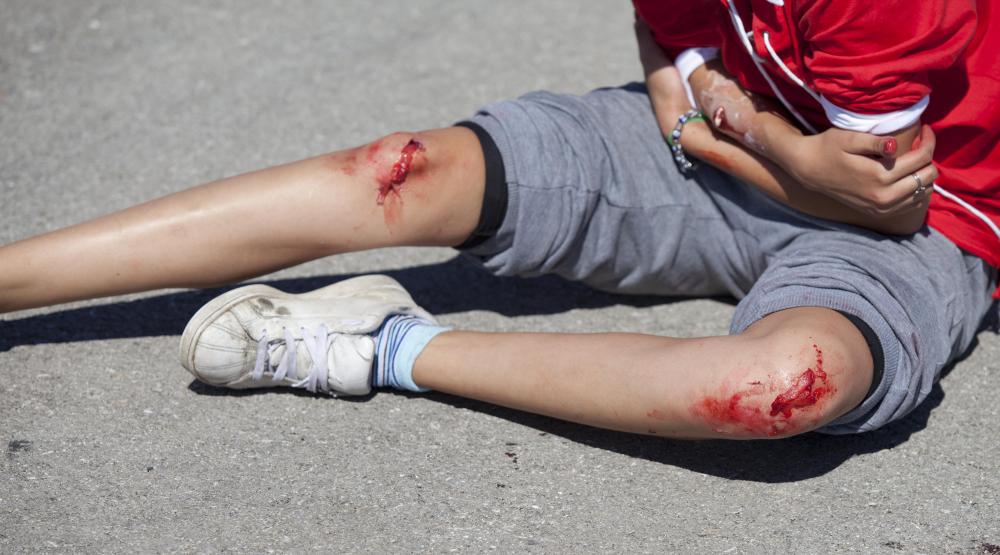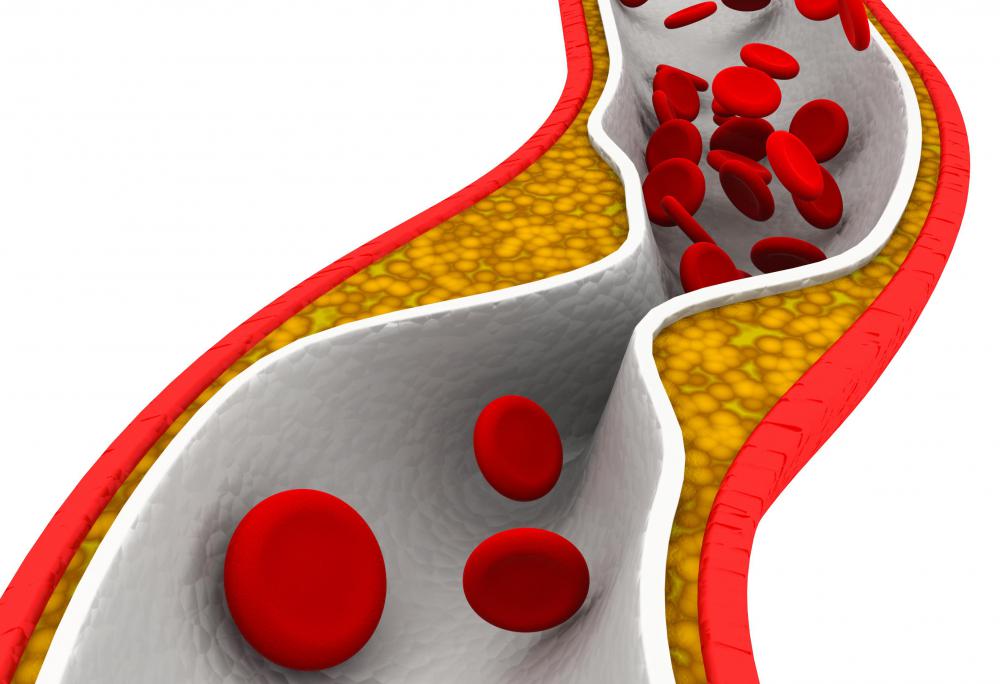At TheHealthBoard, we're committed to delivering accurate, trustworthy information. Our expert-authored content is rigorously fact-checked and sourced from credible authorities. Discover how we uphold the highest standards in providing you with reliable knowledge.
What are the Symptoms of Gangrene?
Gangrene often occurs when the blood supply to part of the body has been cut off, resulting in death of the tissue. The symptoms of gangrene differ depending on the type, with the two main kinds being wet and dry gangrene. In dry gangrene, an area of the body becomes cold, numb, and red, eventually shriveling up and becoming black in color. In cases of wet gangrene, the area is swollen, painful, and black, usually resulting in ooze that smells unpleasant. There is also a certain type of wet gangrene, called gas gangrene, in which an infected wound is swollen, painful, and produces bloody discharge, often resulting in a fever and irregular heartbeat.
Most cases of dry gangrene result from insufficient blood flowing through the arteries, usually due to diabetes, high cholesterol, or smoking. Typically, the symptoms of gangrene of this type start with the area feeling numb and cold, usually appearng red in color. Over time, the area becomes brown, eventually resulting in a black color and shriveled appearance. Dry gangrene usually progresses slowly, so knowing the symptoms of gangrene of this type can help patients get treatment as soon as possible. The main method of treatment is restoring adequate blood flow to the affected site.

Wet gangrene typically forms from an infected wound, as the swelling caused by infection may stop the blood flow. This occurrence may allow bacteria to begin invading the muscles, growing over time. Most of the symptoms of gangrene of this type are typical of any infection, such as swelling and decay, oozing, an unpleasant odor, and extreme pain at the affected site. The patient may also get a fever, and the site usually becomes black in color, hopefully alerting the patient that there is a problem that deserves medical attention. The typical treatment of wet gangrene is removal of the dead tissue, as well as antibiotics given intravenously.

Gas gangrene is a subset of wet gangrene, and is usually caused by the growth of a type of bacteria that only thrives when there is no oxygen. It is called Clostridia, and this type of bacteria is known for producing poisonous gas within the wound. The most common symptoms of gangrene caused by this bacteria include swelling, bloody discharge, and extreme pain. Patients often also develop a fever, as well as both fast heart rate and labored breathing. Gas gangrene needs to be treated quickly before the toxins cause damage to the internal organs, and the treatment is typically the same as the methods used for general wet gangrene.
AS FEATURED ON:
AS FEATURED ON:

















Discuss this Article
Post your comments